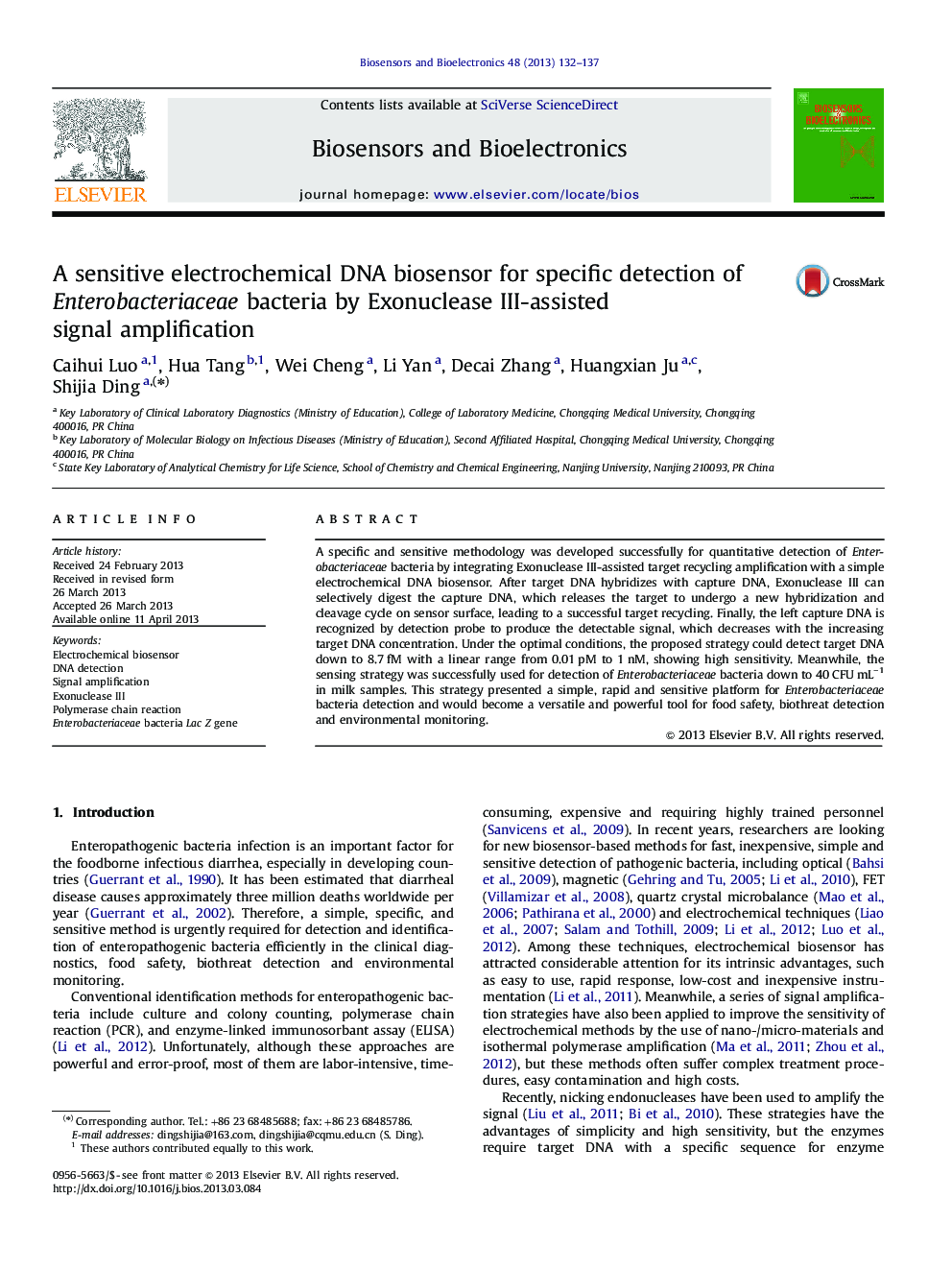| Article ID | Journal | Published Year | Pages | File Type |
|---|---|---|---|---|
| 7233957 | Biosensors and Bioelectronics | 2013 | 6 Pages |
Abstract
A specific and sensitive methodology was developed successfully for quantitative detection of Enterobacteriaceae bacteria by integrating Exonuclease III-assisted target recycling amplification with a simple electrochemical DNA biosensor. After target DNA hybridizes with capture DNA, Exonuclease III can selectively digest the capture DNA, which releases the target to undergo a new hybridization and cleavage cycle on sensor surface, leading to a successful target recycling. Finally, the left capture DNA is recognized by detection probe to produce the detectable signal, which decreases with the increasing target DNA concentration. Under the optimal conditions, the proposed strategy could detect target DNA down to 8.7Â fM with a linear range from 0.01Â pM to 1Â nM, showing high sensitivity. Meanwhile, the sensing strategy was successfully used for detection of Enterobacteriaceae bacteria down to 40Â CFUÂ mLâ1 in milk samples. This strategy presented a simple, rapid and sensitive platform for Enterobacteriaceae bacteria detection and would become a versatile and powerful tool for food safety, biothreat detection and environmental monitoring.
Keywords
Related Topics
Physical Sciences and Engineering
Chemistry
Analytical Chemistry
Authors
Caihui Luo, Hua Tang, Wei Cheng, Li Yan, Decai Zhang, Huangxian Ju, Shijia Ding,
